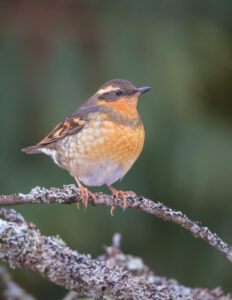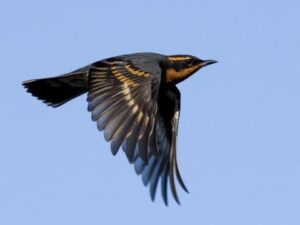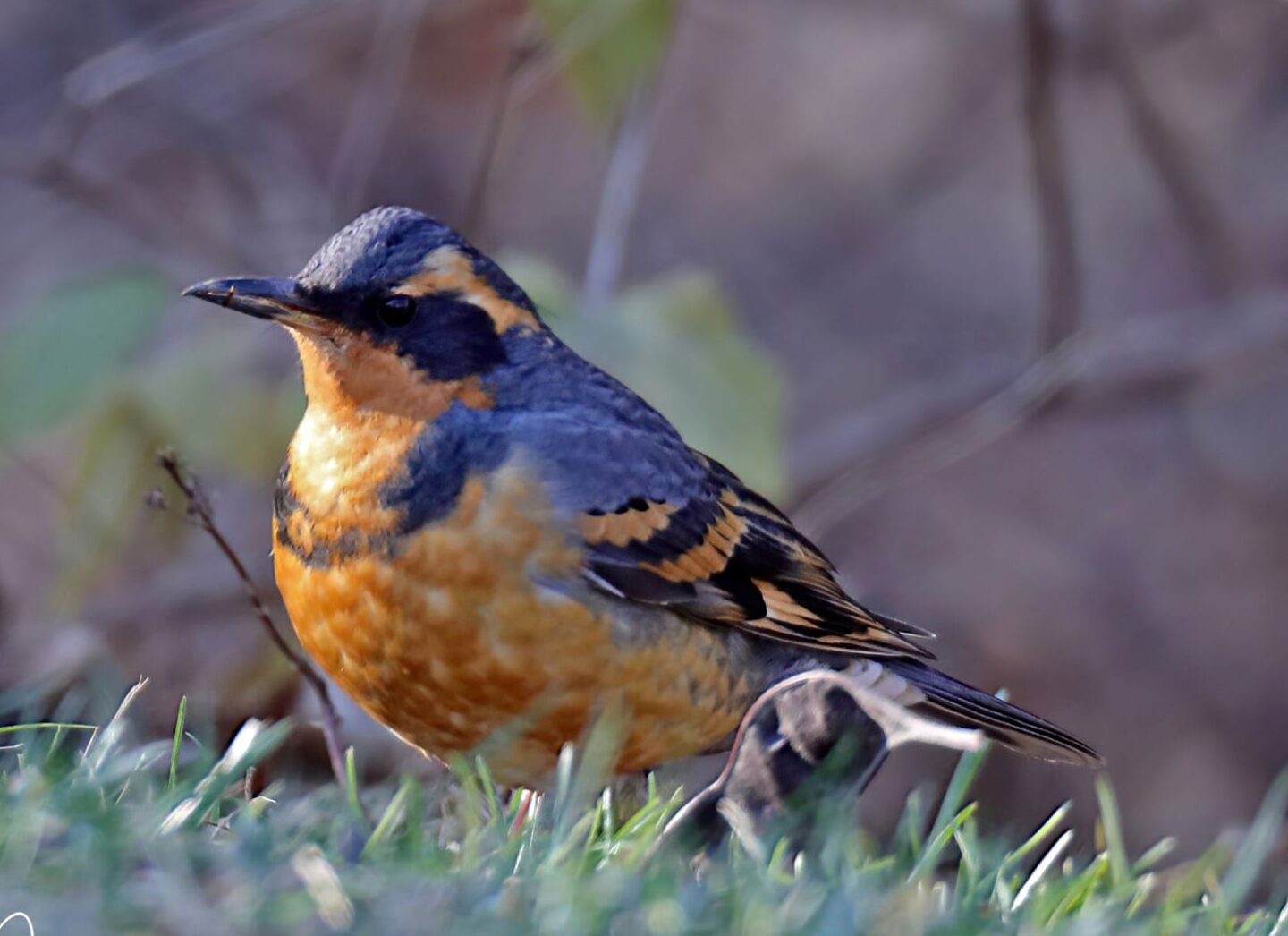Varied Thrush, Ixoreus naevius
Bill Rowe
Check any bird guide, and you’ll see that this handsome robin-like bird nests in western coniferous forests, from Alaska and the Yukon down to coastal Oregon and northernmost California; in winter, it moves farther down through all of California to northern Baja. But this whole range is, even at its closest point, at least 1500 miles from Missouri, so why is it our Bird of the Week? As it turns out, there is some movement of Varied Thrushes in fall that is not just south but far to the east as well, leading to regular fall and winter sightings in Minnesota and Wisconsin, fewer in Iowa, and some rare, occasional visits to Missouri. The first of these (meaning simply the first we actually know of) was in 1985, and in the intervening years there have been about 17 Varied Thrushes known to occur in our state, the earliest in mid-October and the latest on April 1. As encouragement for those who put out food for the birds, many of these wandering thrushes have shown up in people’s yards, coming to their feeders for some seed (although they probably prefer berries). The latest example is the male in the banner photo above, which recently appeared at a home in St. Charles County—to the delight of the homeowners as well as the many other local birders who accepted their invitation to watch the bird from the nearby sidewalk and take its photograph. As noted in a prior installment, a “rare bird” like this is usually one that is common somewhere else! Birds, being the most mobile of all living things (OK, with the exception of some insects), are the ones most likely to be found far away from their normal ranges, and the chance for such “vagrants” adds an extra incentive to the already-exhilarating experience of going out to look for birds.
IDENTIFICATION: A male Varied Thrush, as shown above, is much like an American Robin with the added adornments of a dark breastband, a long pale eyebrow, and a fancy wing pattern. The female is similar but with colors more muted; her breastband is anywhere from mid-gray to hardly detectable. At any reasonable distance, there is not much room for confusion with any other species.
ST. LOUIS STATUS: The first Varied Thrush for our area was found on the Illinois side back in 1975, and the one above was about the fifth. Like a lot of rarities, it is always possible but never expectable. The best strategy is to look carefully at every robin!
Learn more and listen to the songs and calls of Varied Thrushes here.


Female
Male in flight, showing wing pattern
Photo Credit: Cornell Lab of Ornithology (All About Birds)




